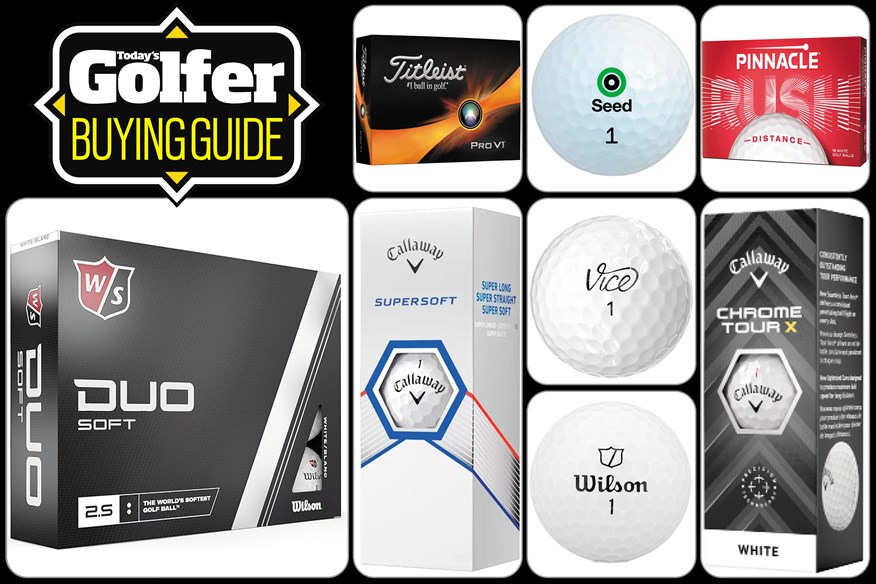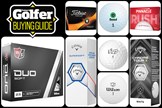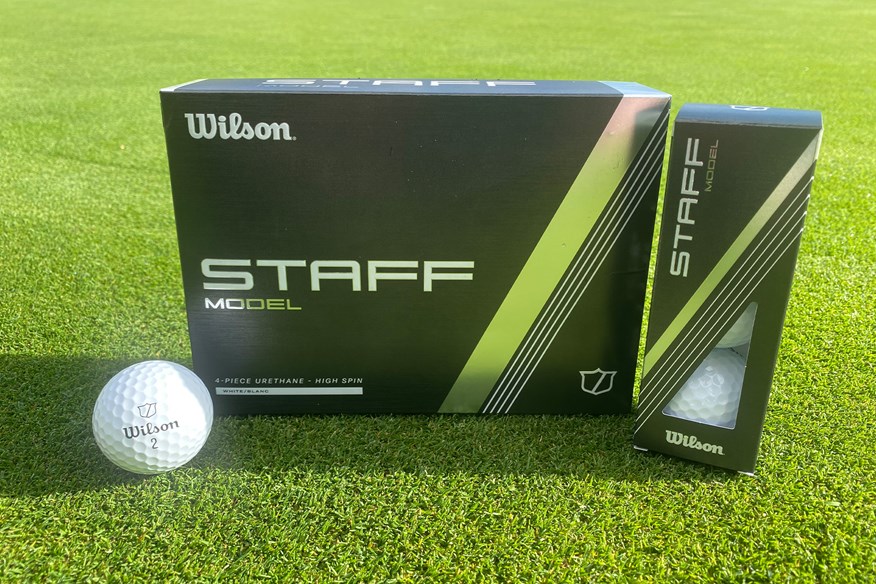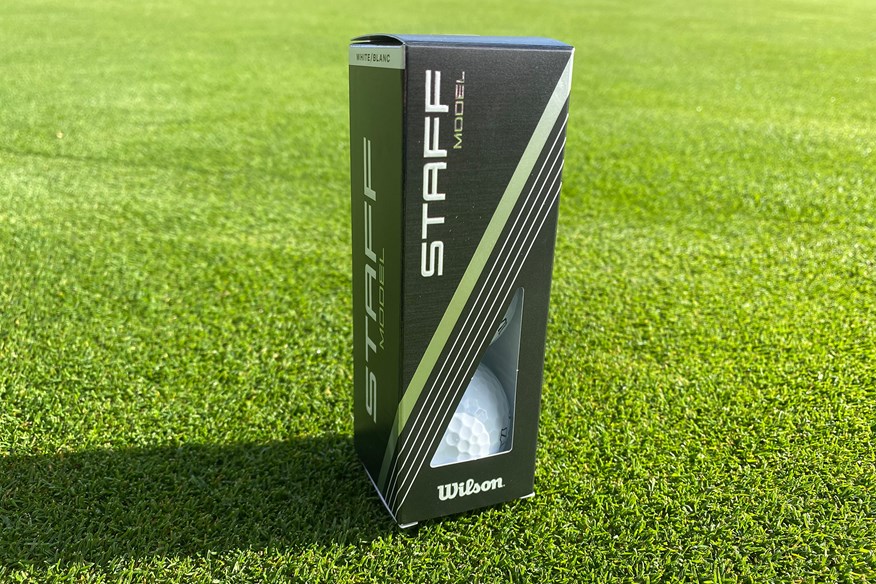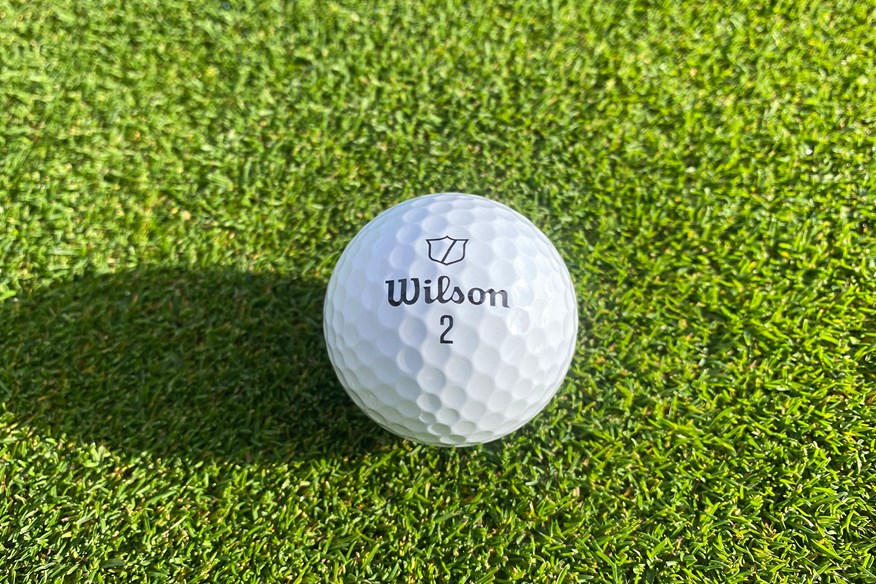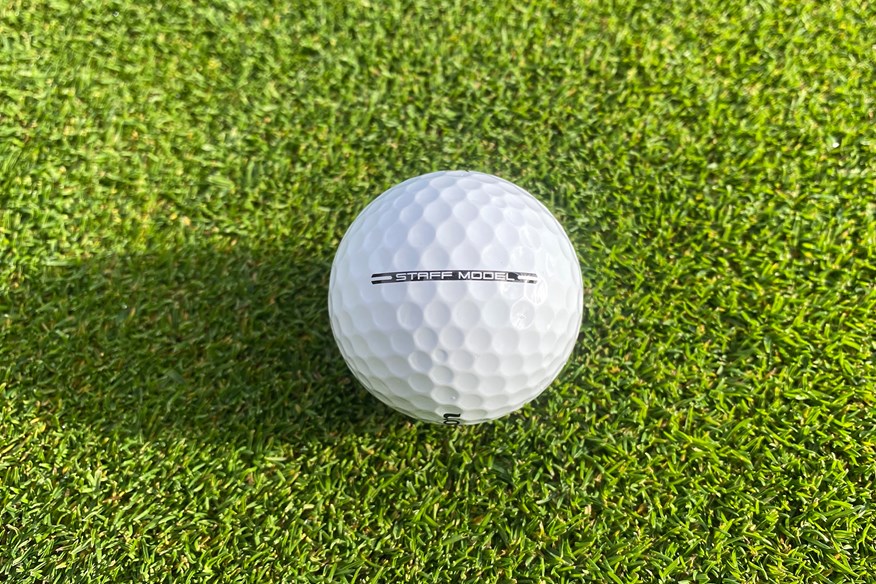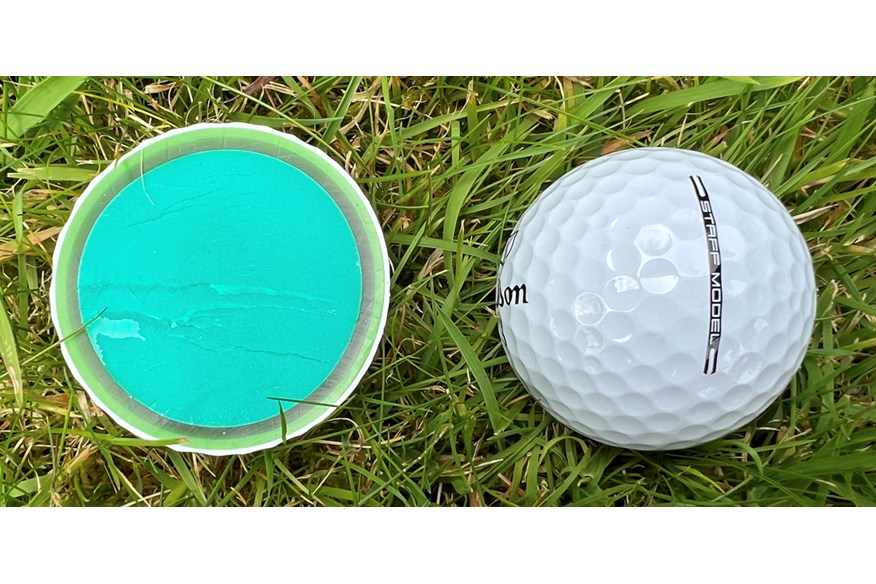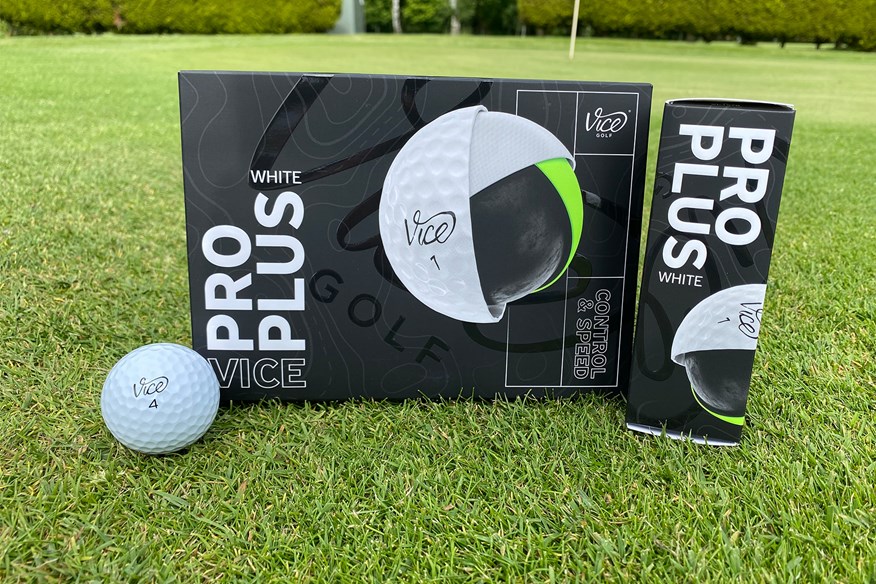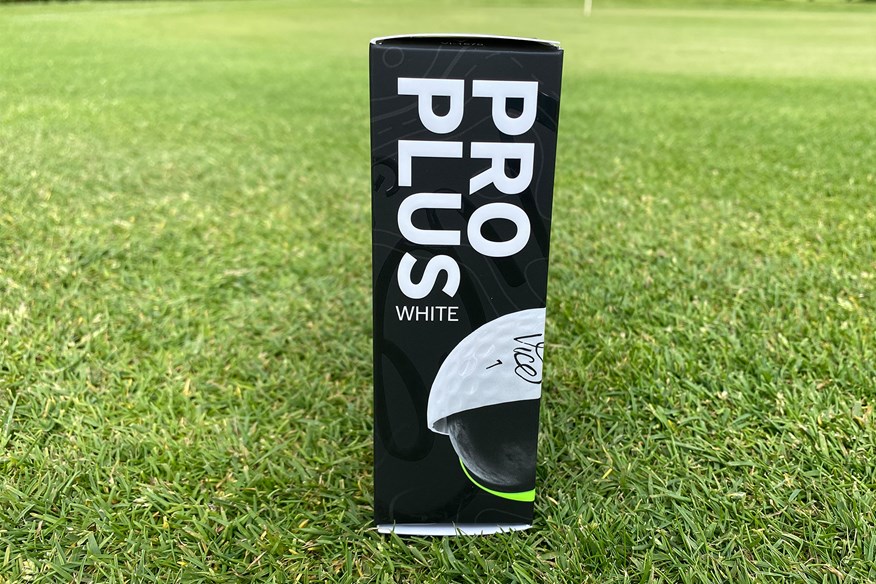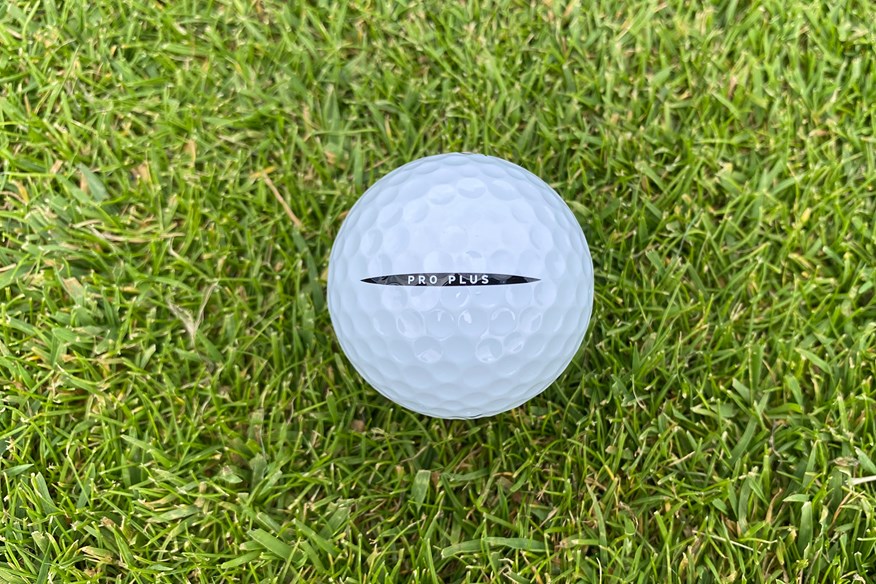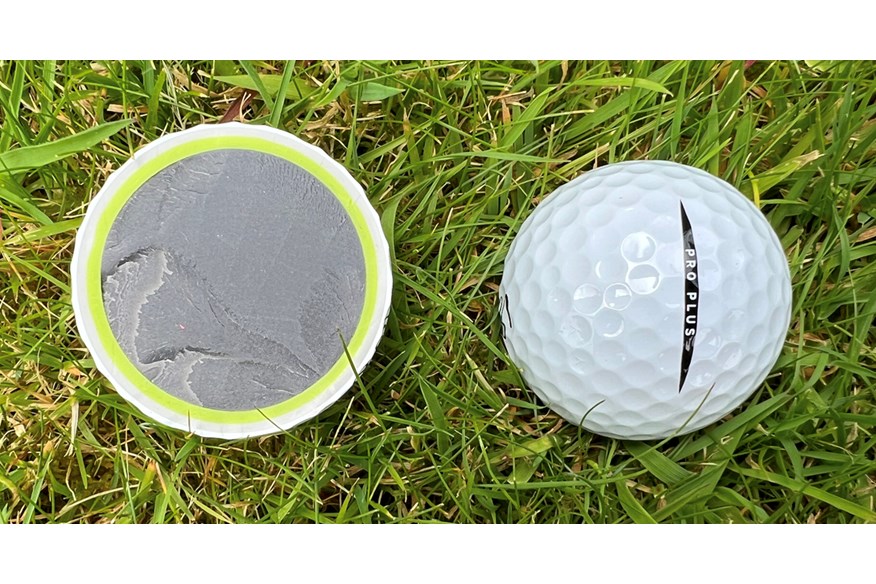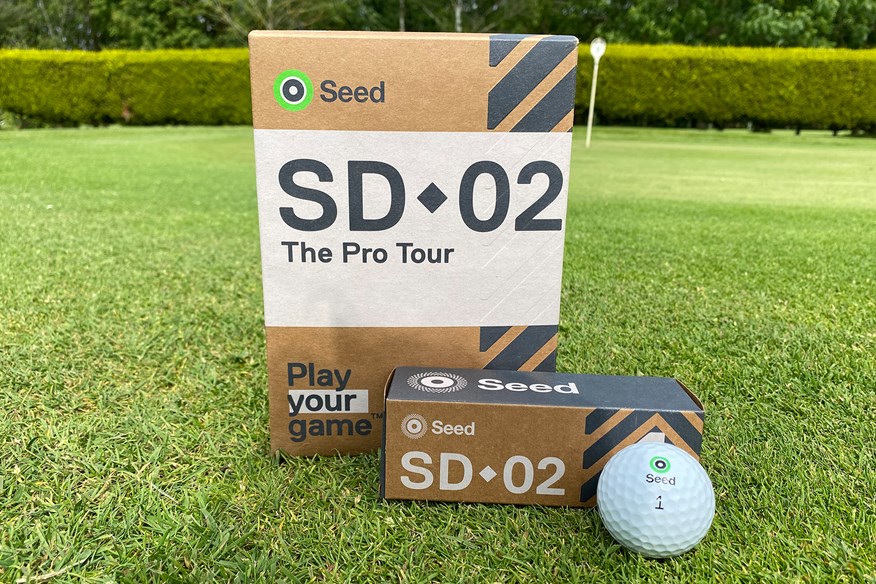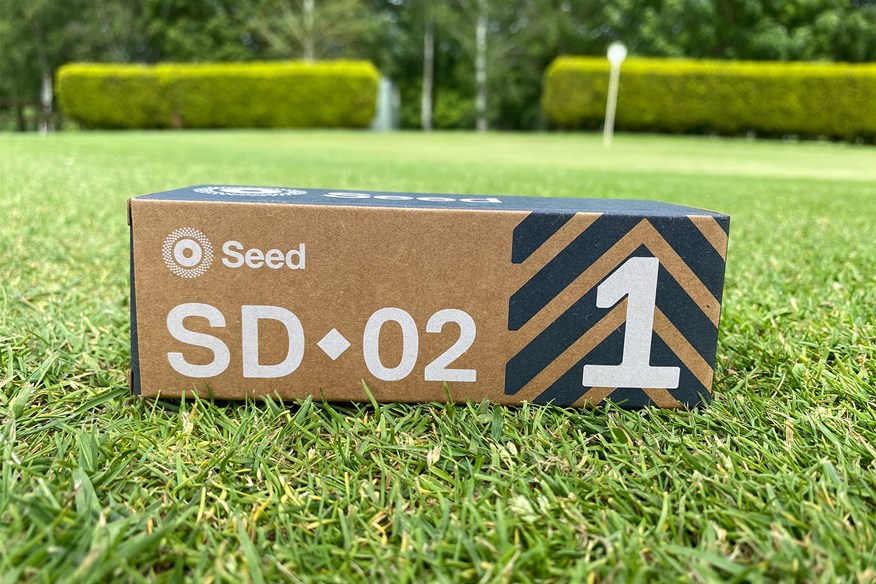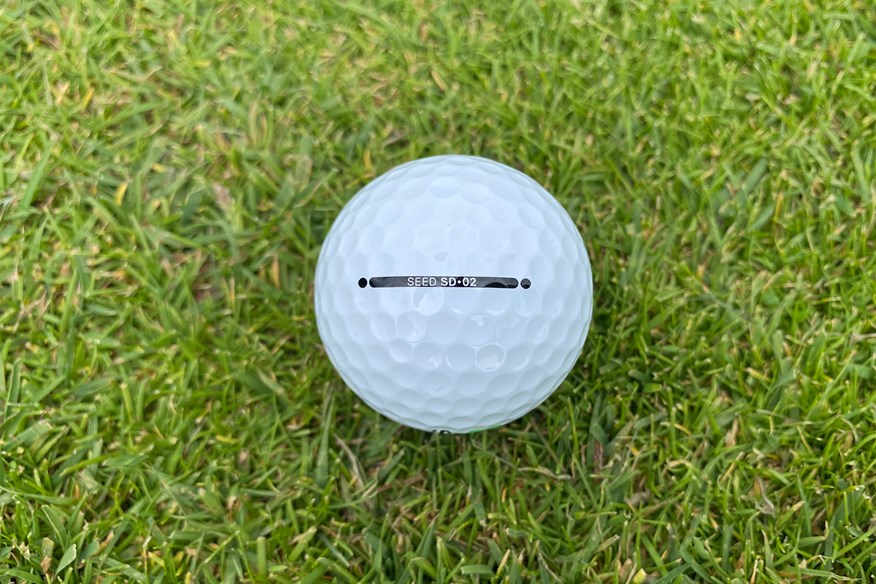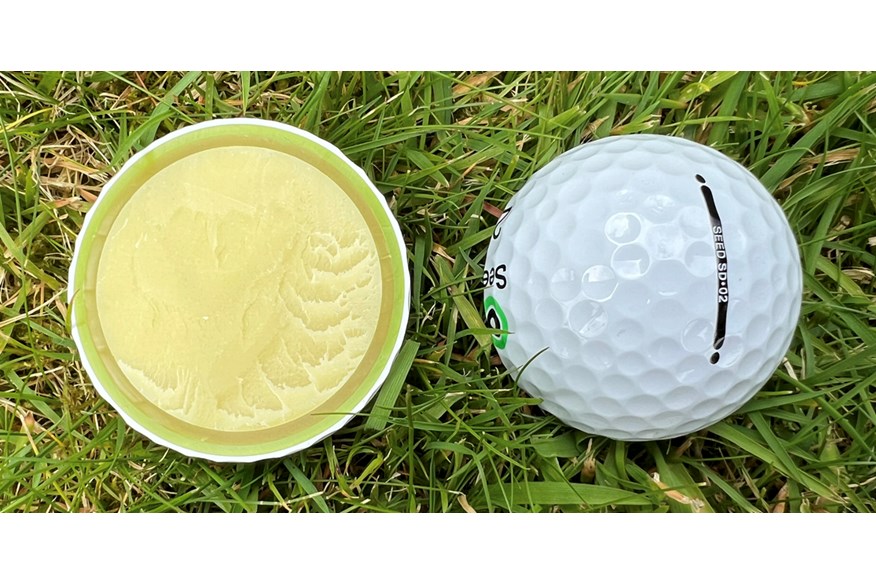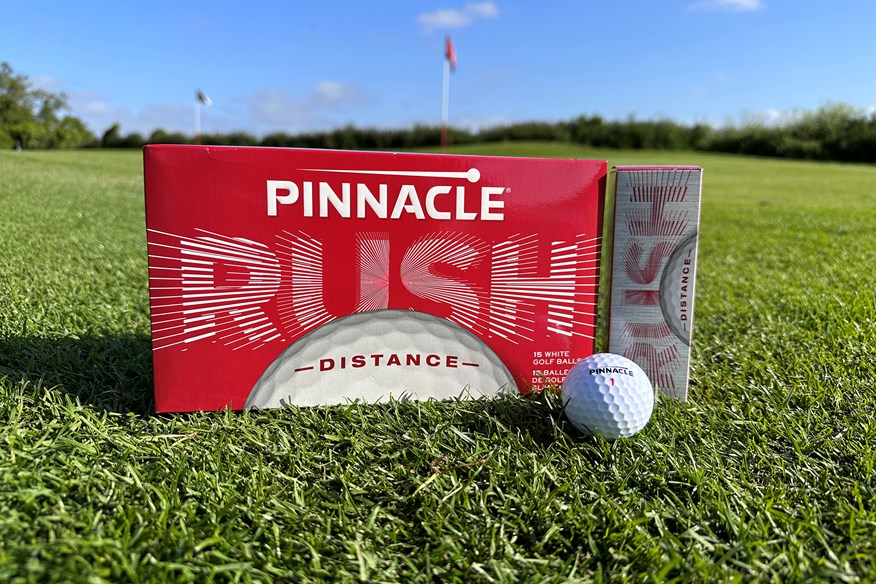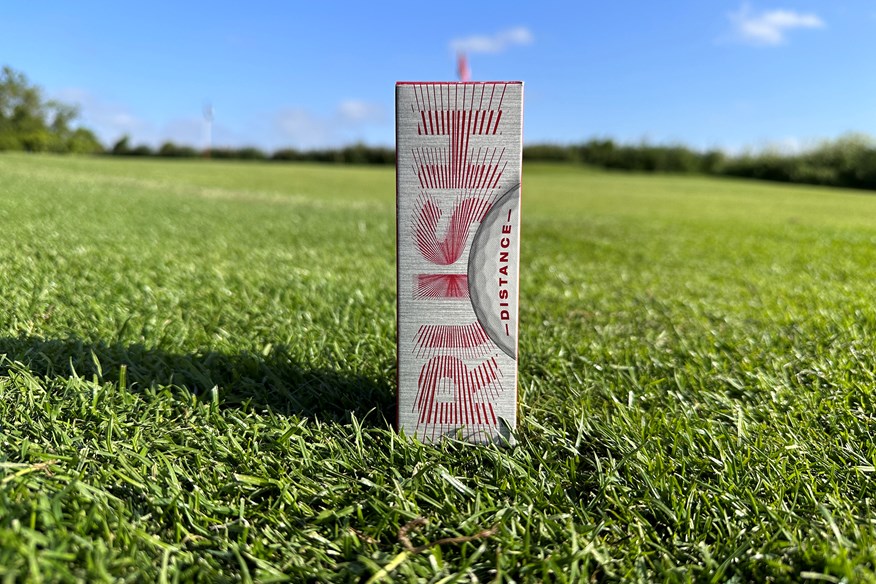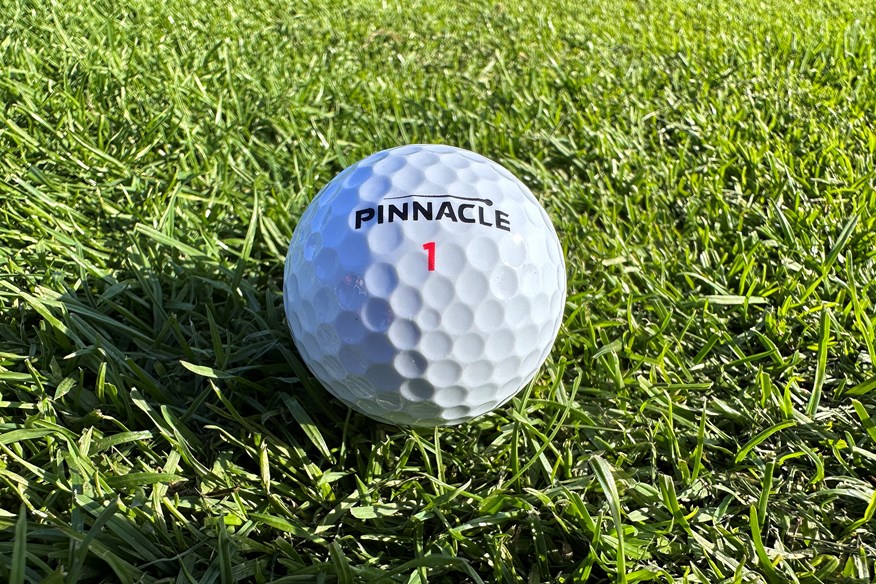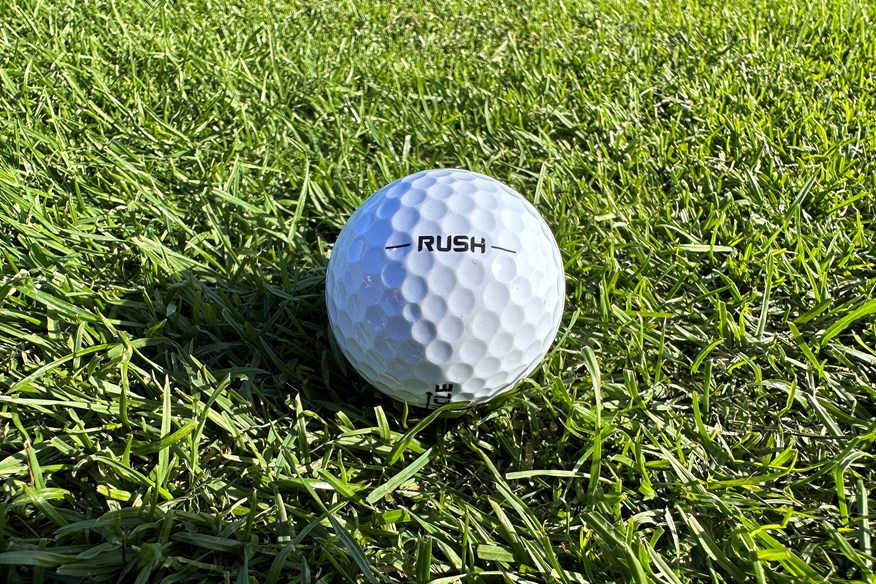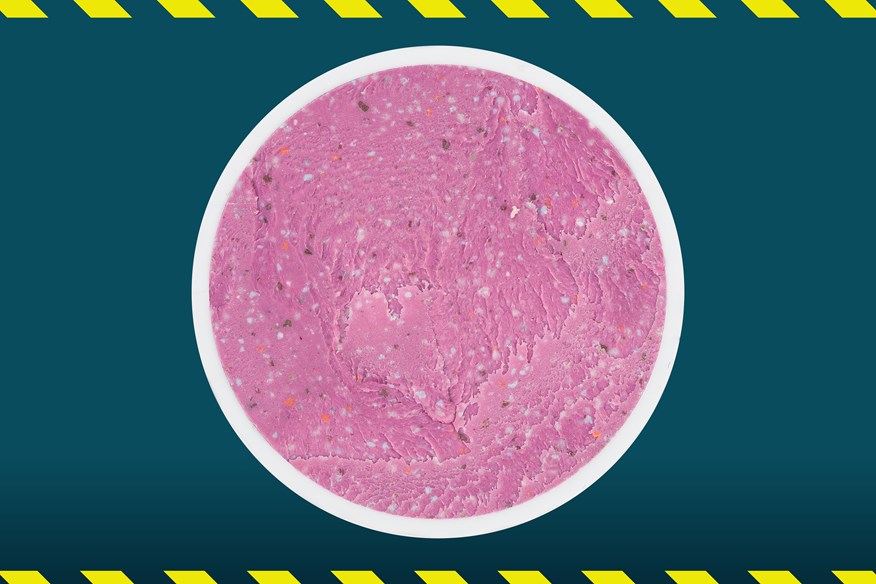Best Golf Balls for Slow Swing Speeds 2025: A wide range of options to help your game
Last updated:
Click below to find out more about Today's Golfer's golf ball testing process.
The majority of golfers don’t swing the club as quickly as Viktor Hovland or Linn Grant, but does that mean you shouldn’t play with the same golf ball as them?
Jump to:
If you’re a golfer with a slow swing speed and you’re in need of finding the best golf balls for your game, then you’ve come to the right place. I’ve compiled a list of the best nine models to choose from, ensuring there’s an option for golfers of all playing abilities.
Just because you have a slow swing speed doesn’t mean you can’t play with premium golf balls. Nor does it mean that you need to put a distance golf ball in play. However, if you are looking for a golf ball relevant to your playing ability then feel free to take a look at the best golf balls for mid-handicappers or the best golf balls for beginners and high-handicappers.
A struggle for golfers with slow swing speeds can be generating spin, therefore it might also be worth checking out the best high-spin golf balls. Like in all categories of golf balls, you can spend a pretty penny or you can save some cash by opting for a cheap golf ball.
Best Golf Balls for Slow Swing Speeds: Some models to consider
Best overall: Callaway Supersoft | View Offer
Best feeling: Wilson Staff Model | View Offer
Best high-spin: Callaway Chrome Tour X | View Offer
Best DTC: Vice Pro Plus | View offer
Among the best golf balls for slow swing speeds are models represented on Tour (including the No.1 ball in golf) and some of the best value golf balls on the market. There’s a wide range of golf balls that are suitable for golfers with slow swing speeds and the nine in this article are a good place to start, but there are many more you could play.
If after looking through the options I’ve picked out below you’re still unsure as to what you’re looking for, please take the time to read through the detailed buying guide and see if any questions you have can be answered in the FAQ section.
A couple of aspects to consider when looking for the best golf ball if you have a slow swing speed is… you’ve guessed it… swing speed! While this is arguably subjective depending on your standard/level of golf, if you have a swing speed north of 90mph, chances are you don’t need to be playing with a golf ball for slow swing speeds.
The other is ability, as I’ve already mentioned, there is a wide range of golf balls featured below, from premium golf balls to golf balls for beginners and high-handicappers. Based on your ability (hopefully, you should find a suitable option to help you play great golf.
Best Golf Balls for Slow Swing Speeds
Callaway's soft golf ball is great for players with slow sping speeds
Best overall golf ball for slow swing speeds
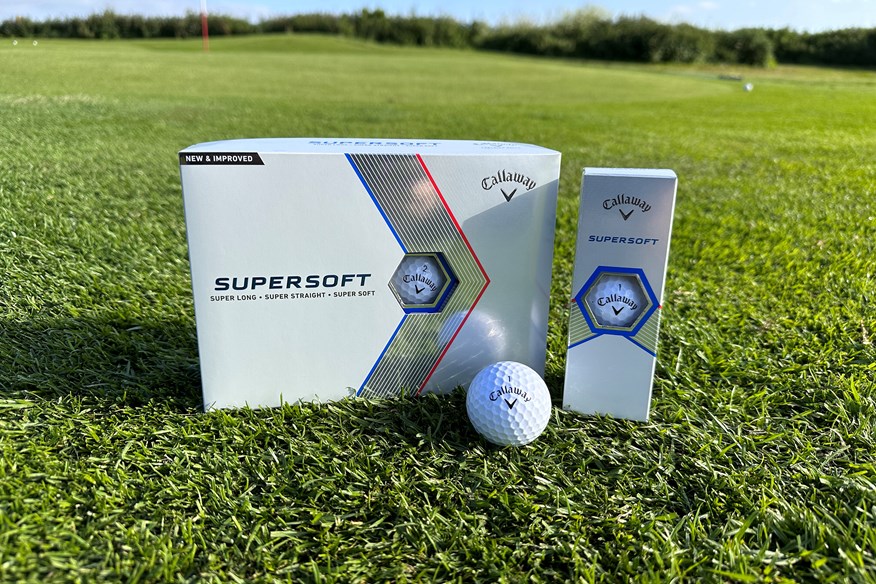

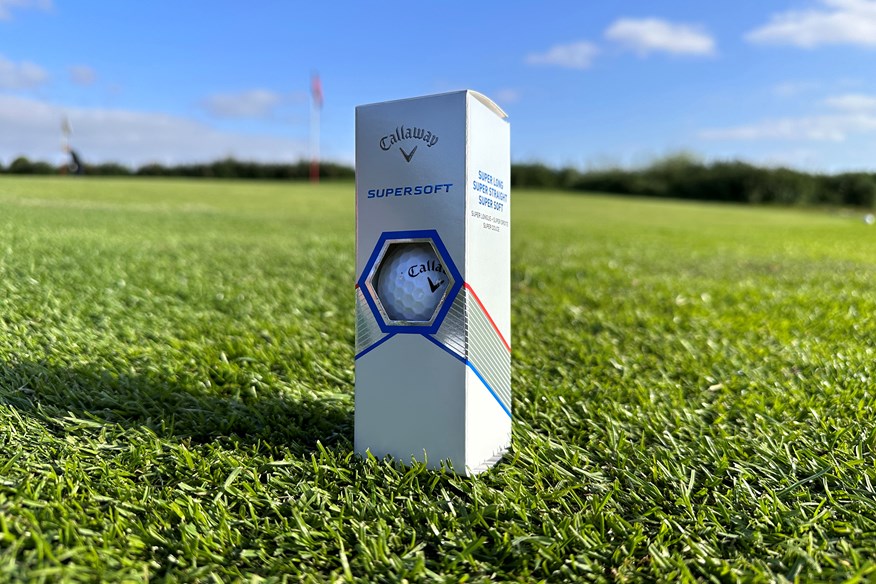

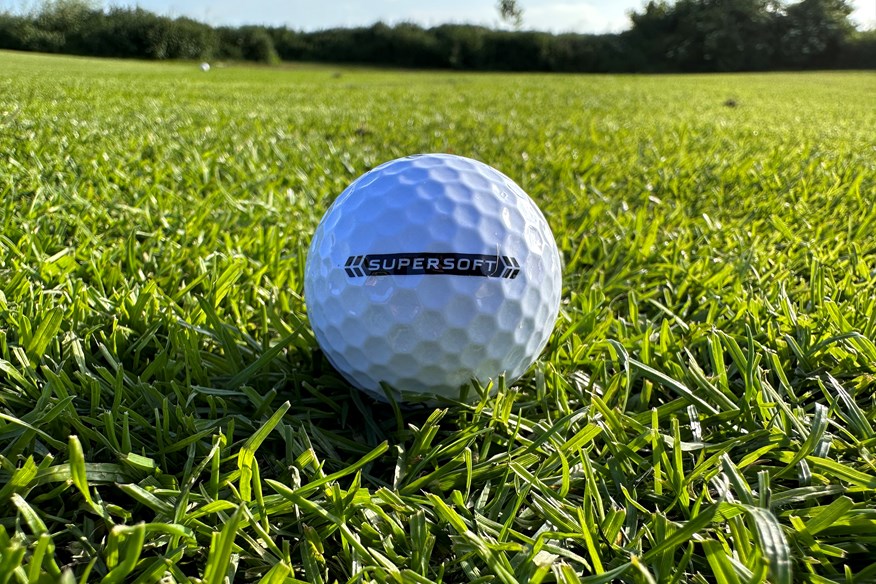

In our 2023 robot test, the Callaway Supersoft was the lowest-spinning and longest golf ball when being hit by a driver swinging at 85mph. That low spin remained as the driver swing speed increased – it was the third-lowest spinning golf ball at 100mph and the lowest-spinning again at 115mph. However, the distance of the Supersoft becomes less competitive as swing speed increases.
With a 7-iron in our 2023 golf ball robot test, the Supersoft was extremely competitive with regard to distance, generating 4792 rpm, hence why it's one of the best low-spinning golf balls. That’s a similar story with the pitching wedge too – producing 7129 rpm backspin and the joint third-best distance.
Around the greens, the Supersoft feels amazing because it is well… super soft! While you get this pleasant feedback, this golf ball doesn't have incredible stopping powers. However, if you’re looking for a value golf ball that will help you retain distance with a slower swing speed then the Supersoft is an outstanding option to consider.
Read our full Callaway Supersoft golf balls review.
Pros
- Solid distance for golfers with slower swing speeds
- Incredibly soft feel
- Extremely popular because of their performance and price
Cons
- Distance does become less competitive once your driver swing speed is above 100mph
| Construction | 2-piece |
| Cover | Hybrid |
| Dimples | 332 |
| Feel | Super soft |
| Flight | High |
| Long game spin | Low |
| Short game spin | Mid-low |
| Color options | White; Yellow; Green; Red; Orange; Pink |
| Alternative models | Supersoft Limited Editions |
- Hyperelastic softfast core
- Hybrid cover
- Hex aerodynamics
A fantastic option for golfers with slow swing speeds wanting a soft golf ball
Best soft-feeling golf balls for slow sping speeds
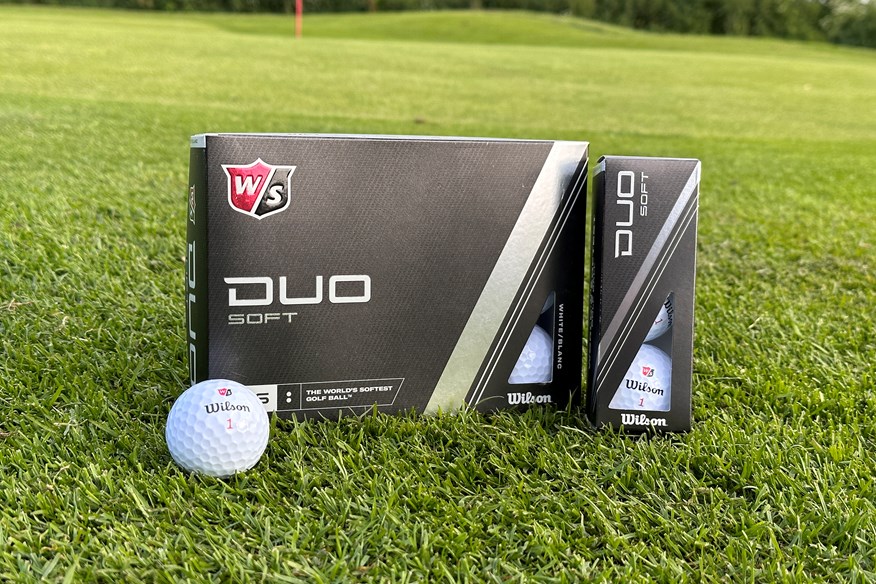

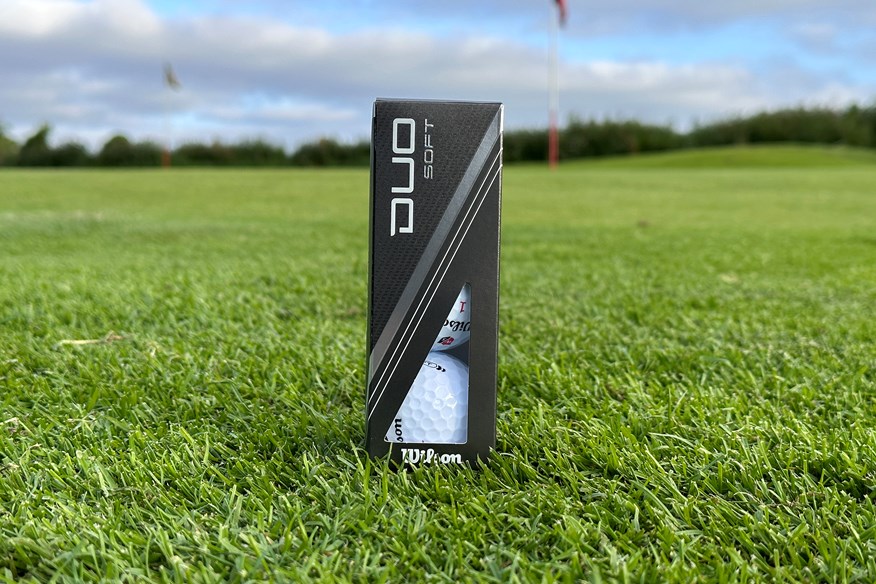
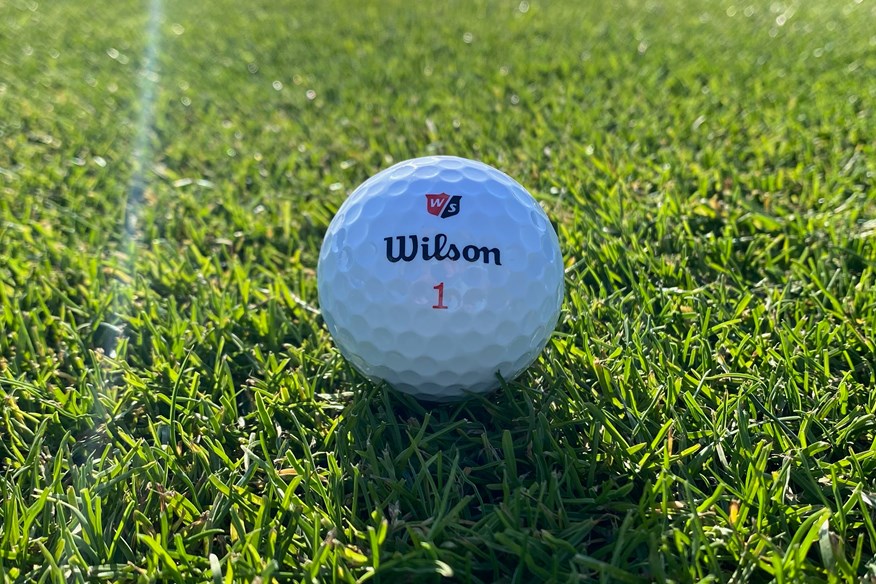
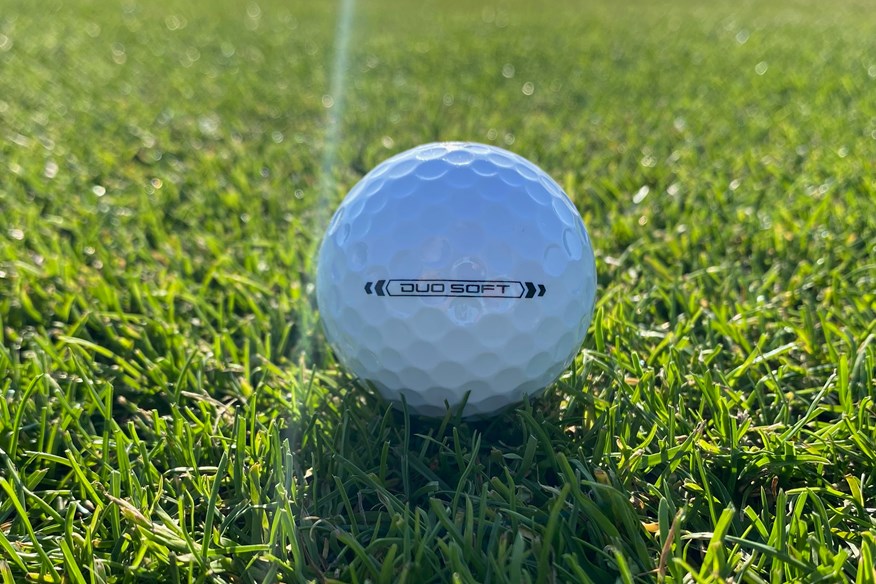
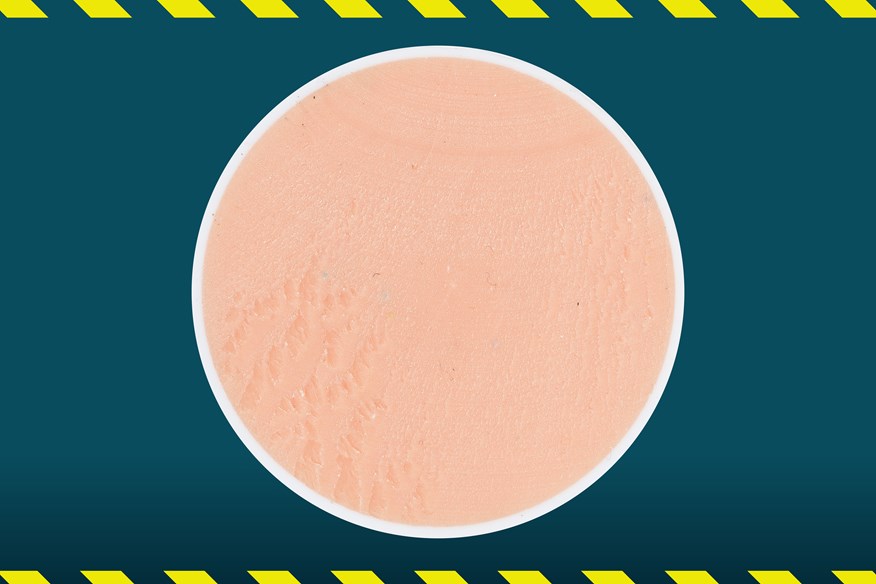
The performance of the Duo Soft in our 2023 robot test highlighted just how good this golf ball is for players with slower swing speeds compared to other models. While you still may be able to hit and hold greens with a Duo Soft there definitely are other options out there that’ll do it easier.
Many people hearing soft might automatically presume that means it’s going to spin a crazy amount but that isn’t always the case. The Duo Soft was among the best lowest-spin golf balls in every category in our extensive golf ball robot test.
Read our full Wilson Duo Soft golf balls review.
Pros
- Impressive distance thanks to low spin off the tee
- Very soft and easy to compress
- Amazing value for money
Cons
- Performance does drop if you swing a driver quicker than 100mph
| Construction | 2-piece |
| Cover | Ionomer |
| Dimples | 302 |
| Feel | Soft |
| Flight | High |
| Long game spin | Low |
| Short game spin | Mid |
| Color options | White; Yellow; Green; Orange; Red |
- Velocity boosting core
- Low compression core
A soft golf ball that produces competitive distance if you have a slow swing speed
Best alignment golf balls for slow swing speeds
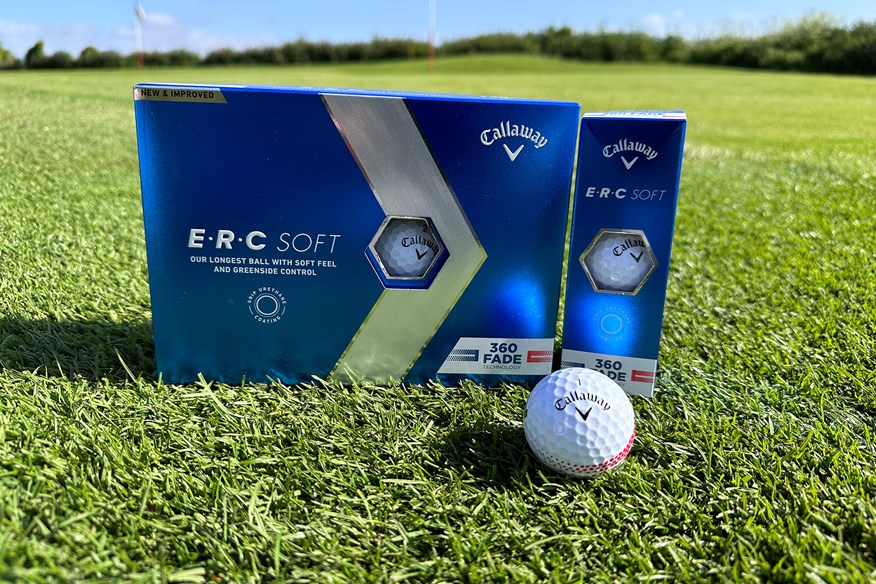

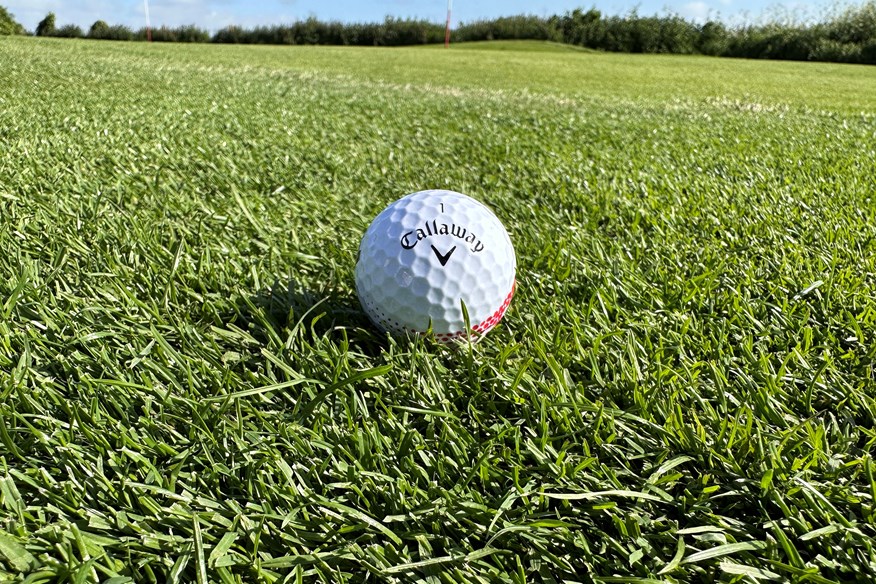
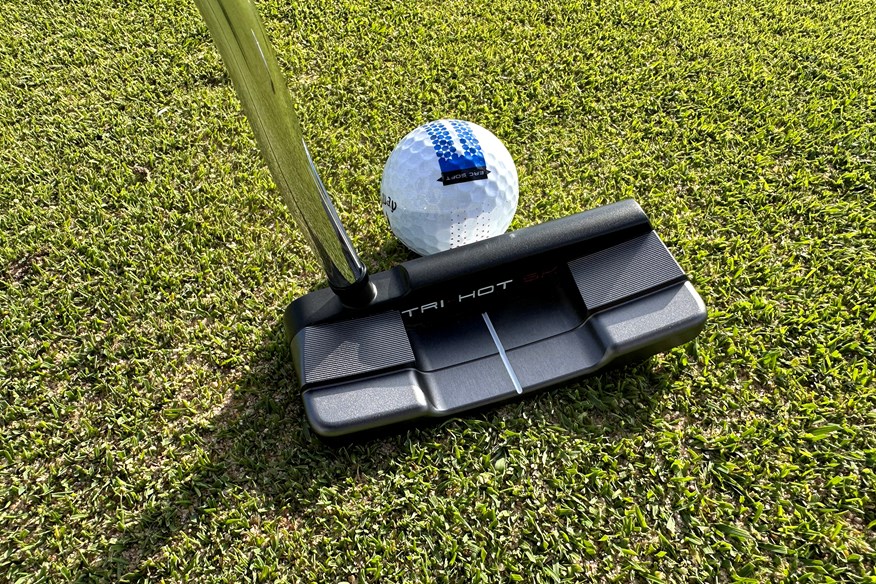
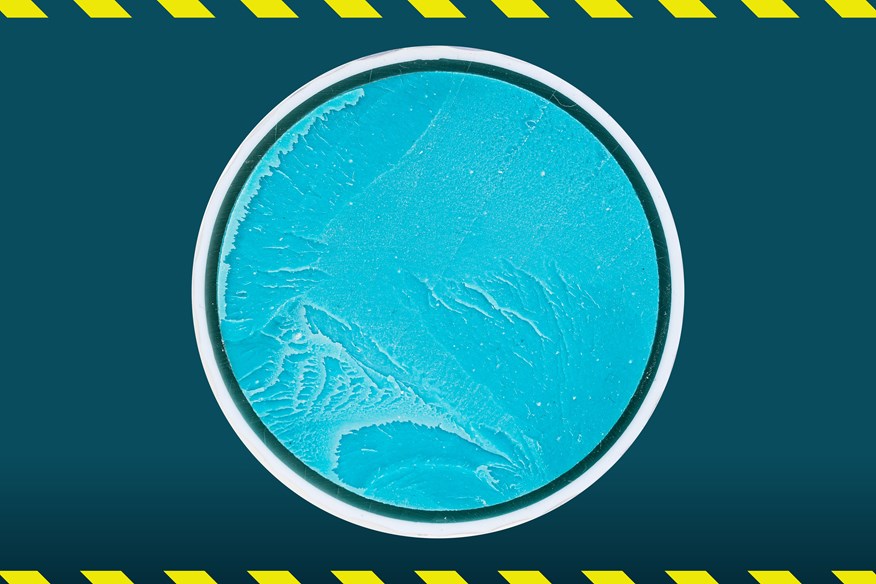
However, in our 2023 golf ball robot test, the Callaway ERC Soft was the longest with a 100mph driver swing speed and it was the fourth longest golf ball at 85mph.
Distance was strong with a 7-iron too and this transfers to the course. I found this ball to be very strong off the tee and I was having to club down when firing at pins - partly because of the lower spin compared to what I'm used to. We also saw in our robot test that the ERC Soft isn't the strongest spinning golf ball.
However, once you apply more loft and get closer to the green, the spin does return and the ball is receptive when it hits the green. If you can afford to sacrifice spin from iron shots the the ERC Soft is definitely a ball to consider.
Read our full Callaway ERC Soft golf balls review.
Pros
- Impressive distance off the tee for varying swing speeds
- Very good greenside spin and control
- Incredibly soft golf balls
Cons
- Spin does drop off with mid-irons
Wilson's premium golf ball suitable for golfers with slower swing speeds
The Wilson Staff Model produced the most distance of all 24 golf ball tested in our 2024 robot test with an 85mph swing speed. Also, the Staff Model finished the test in the silver medal position for consistency.
Unlike some of the other golf balls in this list, the Wilson Staff Model is suitable for golfers with varying swing speeds - as is the Staff Model X. Both golf balls were never outside of the top 5 when it came to driving distance across all three swing speeds in our test.
Read our full Wilson Staff Model golf balls review
Pros
- Incredible distance off the tee
- Amazing short game performance
- Softer feel will be appreciated by many golfers
- Extremely accurately manufactured
Cons
- Hard to fault but they are competitively priced
The No.1 ball in golf is perfectly suitable for players with slower swing speeds
Most popular golf ball for slower swing speeds
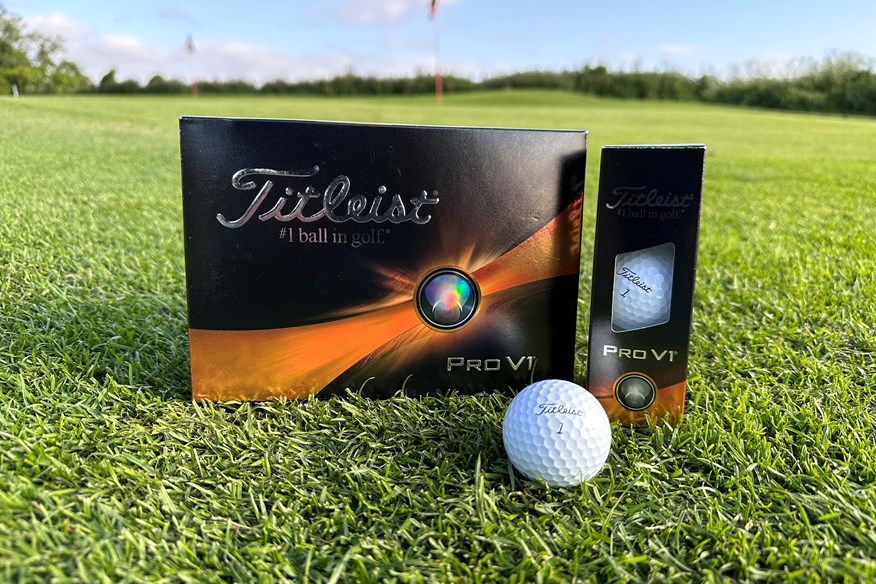

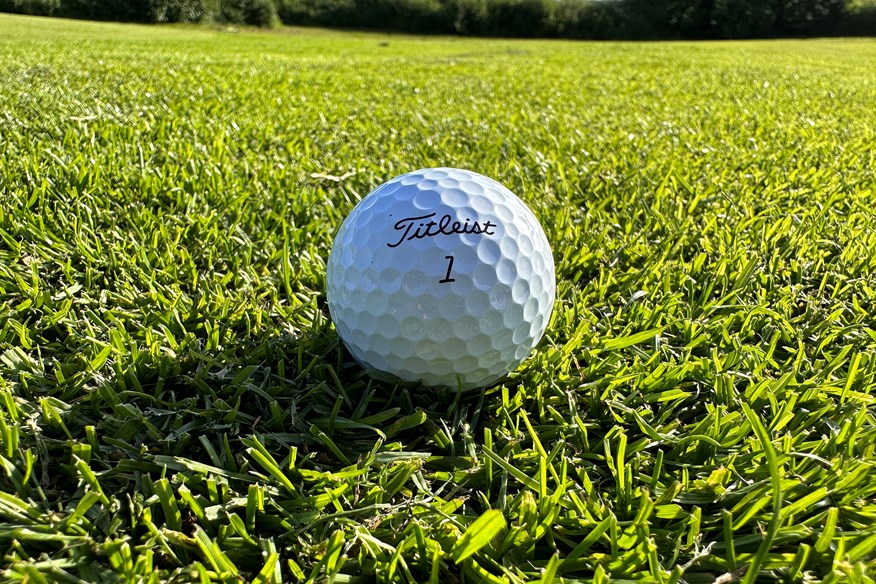
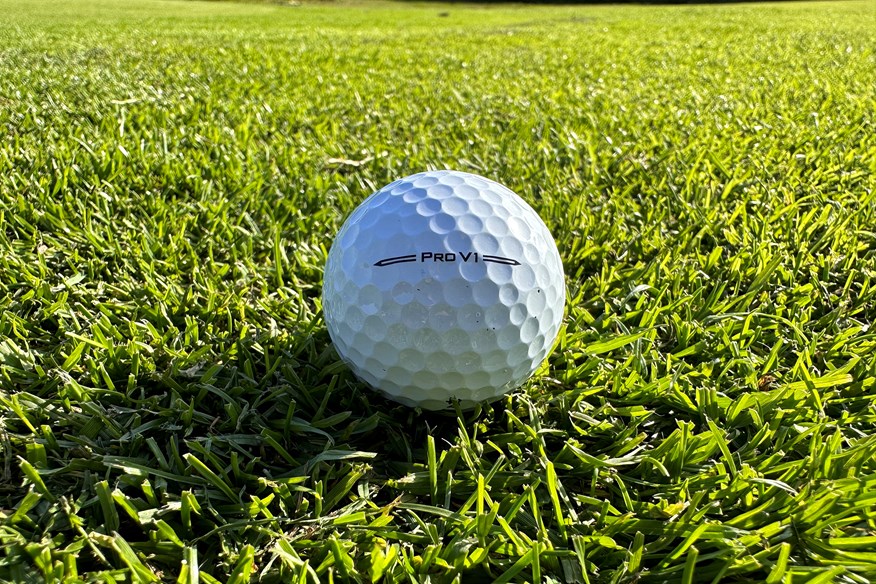
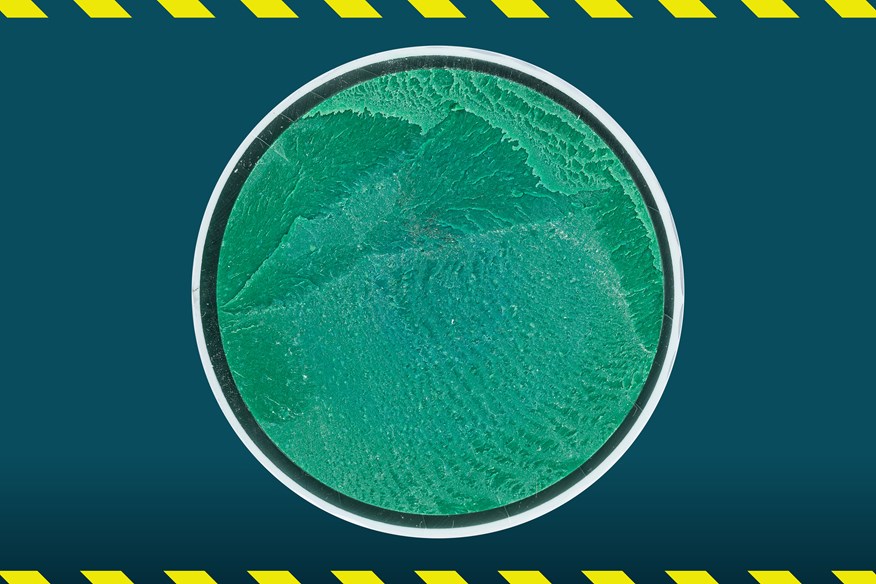
In both years the Titleist Pro V1 has delivered competitive numbers at the slowest swing speed we test with a driver (85mph) and given how well received this ball is at the amateur level I don't want to deter any golfers with a slower swing speed playing with the Pro V1 if they want to.
It might seem strange knowing that Scottie Scheffler plays with a Pro V1 who averages close to 120mph swing speed with a driver that this ball does work so well for players with slower swing speeds, but that's why this ball has achieved the status of being the No.1 ball in golf.
Despite the only difference between this ball and its firmer counterpart being the letter 'x', if you do have a slow swing speed don't be tempted to try the Titleist Pro V1x because the performance dropoff will be drastic.
Read our full Titleist Pro V1 golf balls review.
Pros
- Tighter dispersion than the previous model
- Brilliant distance
- Exceptional spin on approach shots
- Fantastic feel off the club face
- Played by a whole host of the world's best golfers
Cons
- Urethane cover marks quite easily, considering the price
Callaway's firmer Tour ball will increase spin if you have a slow swing speed
Best high-spin golf ball for slow swing speeds
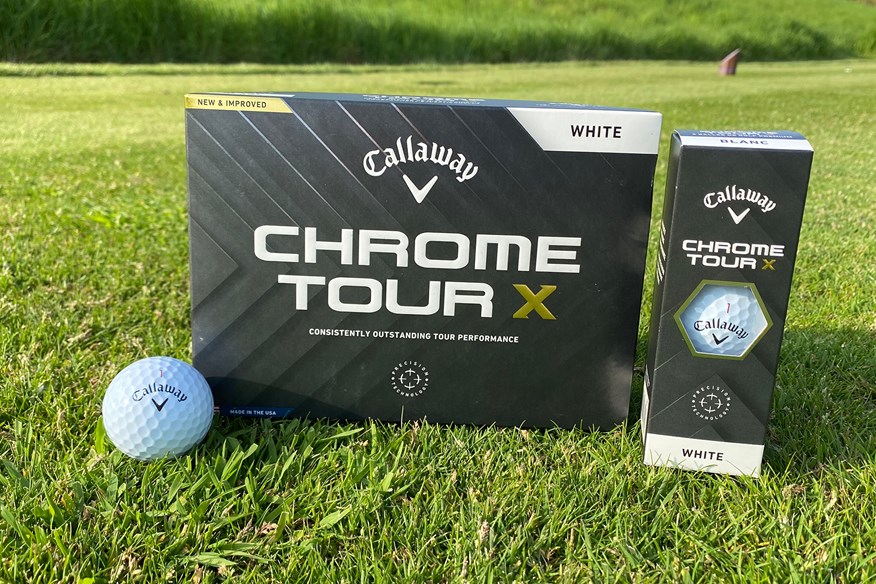

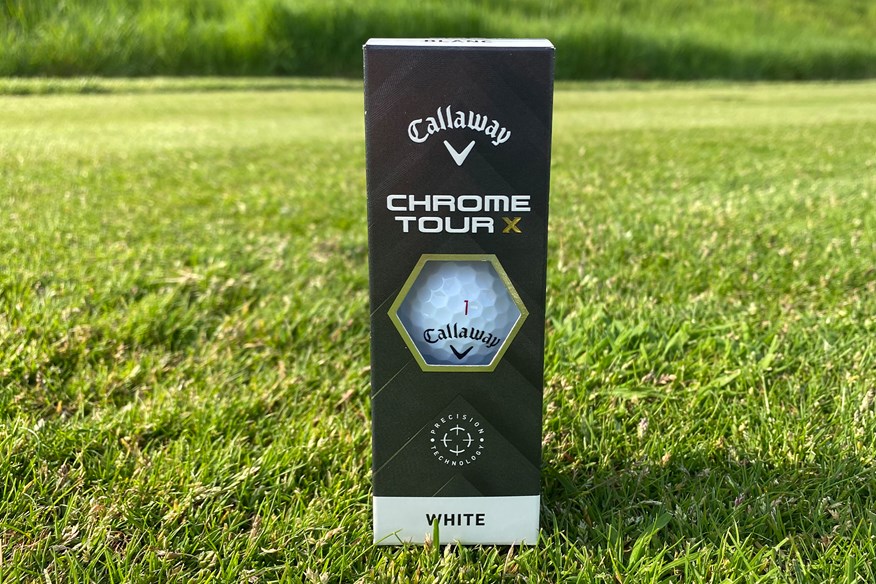
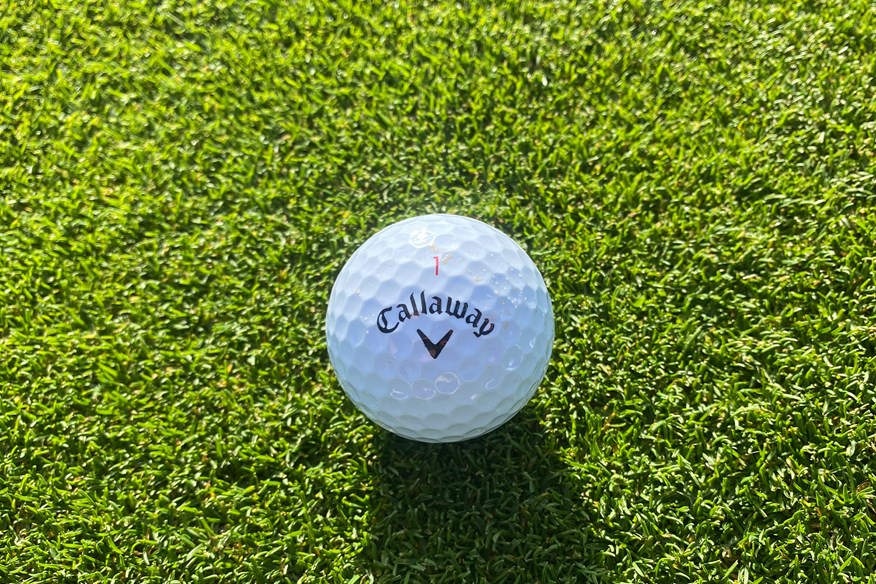
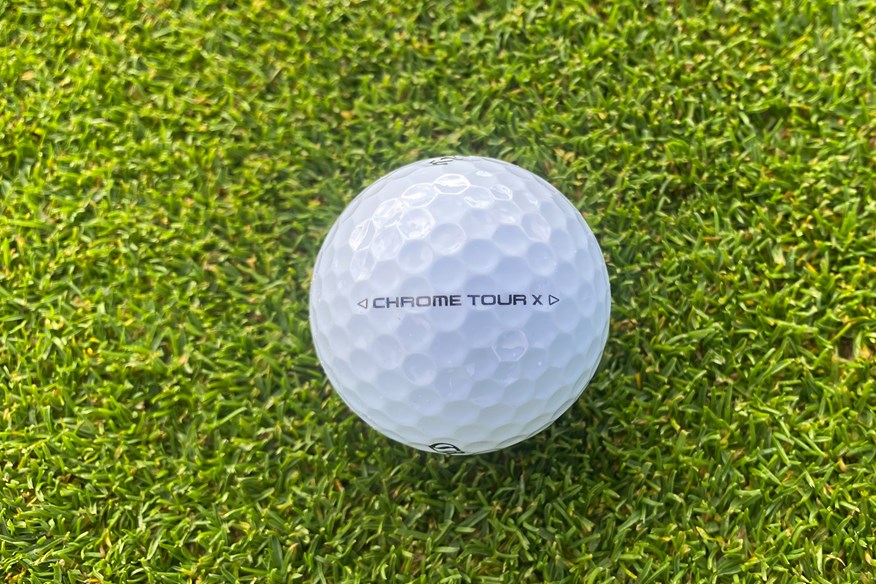
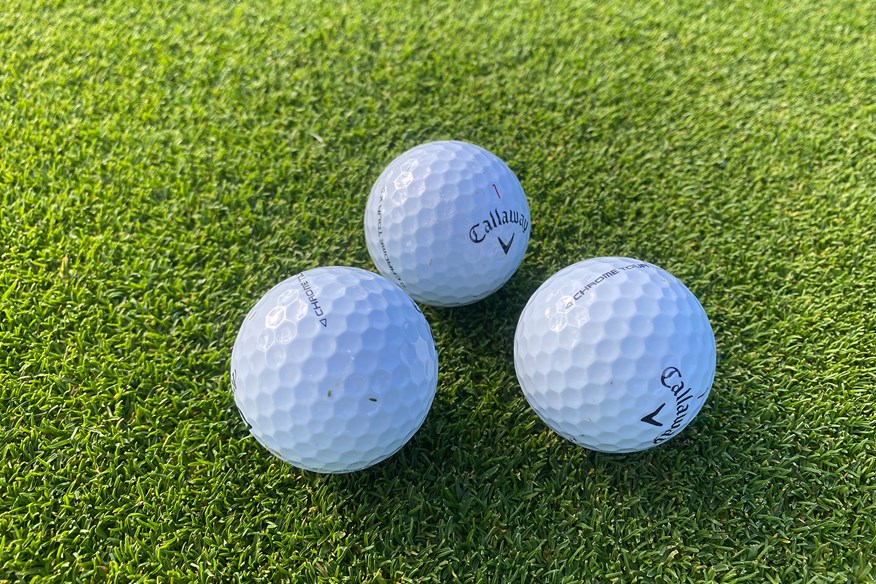
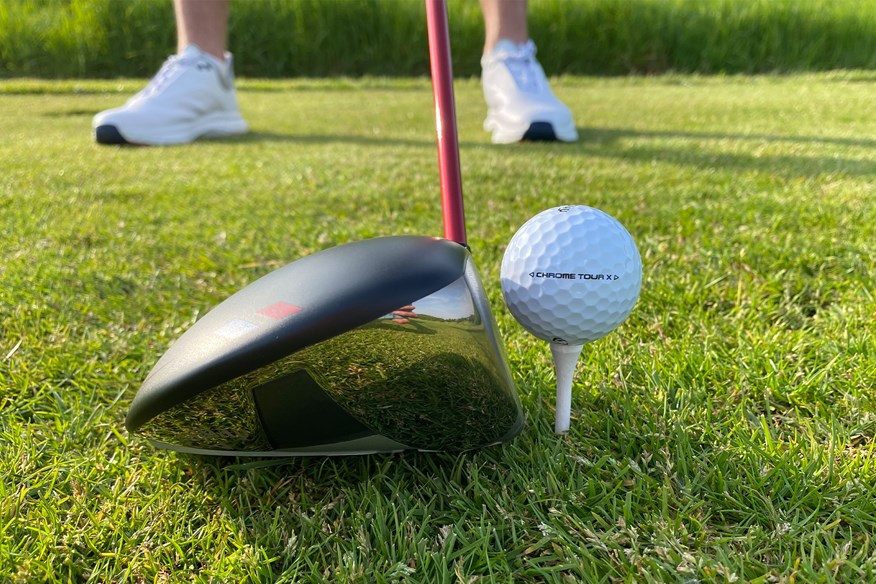
It might come as a surprise to hear that the Callaway Chrome Tour X is a brilliant model to consider if you have a slow swing speed, but if you enjoy playing with a ball that easily generates spin, feels firmer, and has Tour approval then this could be the ball for you.
Off the tee, the Chrome Tour X spins more than the Chrome Tour which won’t be to everyone’s liking but for those who struggle to generate height and potentially lose the ball left then the Chrome Tour X is well worth considering.
The results from our 2024 robot test clearly show this being the best high-spinning golf ball Callaway has to offer. The Chrome Tour X spins most when required, being the highest-spinning golf ball of the 24 we tested from a 7-iron and a pitching wedge. With a driver, it averaged out across the three driver swing speeds as the second highest-spinning model.
The Chrome Tour X is a fantastic golf ball for anyone with a slow swing speed wanting to increase spin without losing distance. The price shouldn't put you off because you're guaranteed a fantastic product you can trust.
Read our full Callaway Chrome Tour X golf balls review.
Pros
- Extremely high spin and control when approaching the greens
- Produces brilliant ball speeds and distance
- Played by some of the best players in the world across numerous Tours
Cons
- The price has shot up which might be off-putting for some golfers
| Construction | 4-piece |
| Cover | Tour urethane |
| Dimples | 332 |
| Feel | Soft |
| Flight | High |
| Long game spin | Mid |
| Short game spin | High |
| Colour options | White; Yellow |
| Alternative models | Chrome Tour X Triple Track; 360° Triple Track; TruTrack |
- Exceptionally Fast Ball Speeds
- Maximum Workability Through The Bag
- Optimized Greenside Spin and Control
- More Consistent Performance
A premium DTC golf ball for players with slow swing speeds
I was very surprised to see how well this golf ball performed in our 2024 robot test at the slowest driver swing speed (85mph) coming in as the second-longest golf ball (behind the Wilson Staff Model).
The beauty of the Vice Pro Plus is that it's a competitive golf ball, regarding distance, at varying swing speeds. Whenever I've played with the Pro Plus out on the golf course I have noticed that distance definitely isn't lacking and neither is spin.
Personally, I'm not a huge fan of the feel of the Pro Plus and I can't quite put my finger on what it is but I feel the feedback and response is almost muted. Feel free to give them a go yourself and you might think otherwise.
If you're looking for an even better bargain then you should consider the Vice Tour which is one of the best golf balls for mid-handicappers and also performed very well in our 2024 robot test at slower swing speeds.
See how the Vice Pro Plus golf balls performed in our 2024 golf ball robot test.
Pros
- The best DTC 4-piece golf ball in our 2024 robot test
- Good distance
- So long as you buy in bulk they are good value for money
Cons
- Less iron and wedge spin than the brilliant Callaway Chrome Tour X
| Construction | 4-Piece |
| Cover | Urethane |
| Dimples | 336 |
| Feel | Firm |
| Flight | Mid-high |
| Long game spin | Mid-Low |
| Short game spin | Mid-high |
| Colour options | White; Lime |
| Alternative models | Pro Plus Drip; Pro Plus Shade |
- Ultra thin cast urethane cover
- Versatile magnesium ionomer outer mantle
- Surlyn grade inner mantle
- Lightweight speed core
An X-style golf ball designed to fly lower
One characteristic this ball shares with a Titleist Pro V1x is that it's a firmer-feeling golf ball, which is something I like because it delivers more feedback for me.
It was a toss-up between including the Seed SD-02 or the Seed SD-01 among the best golf balls for slow swing speeds because both produced good distance at the 85mph driver swing speed in our 2024 robot test. However, I decided to include the SD-02 because it was marginally longer, but both are good options.
It seems odd to say that two of Seed's premium golf ball offerings intended to compete with Tour standard golf balls are worth considering for golfers with slow swing speeds, but they are quality golf balls at a fraction of the price of other premium golf balls.
See how the Seed SD-02 golf balls performed in our 2024 golf ball robot test.
Pros
- Impressive distance
- Great value for money
- Consistent ball flight
Cons
- Delivers a lower ball flight than your typical X golf ball
| Construction | 4-piece |
| Cover | Urethane |
| Dimples | 336 |
| Feel | Medium |
| Flight | Mid |
| Long game spin | Low |
| Short game spin | Mid-high |
| Colour option | White |
- High energy rubber core
- Ultra thin DuPont Surlyn mantle
- DuPont HPF inner cover
- Soft cast urethane cover
Pinnacle's distance option is great for golfers with slow swing speeds
In our 2023 robot test, the Pinnacle Rush performed extremely well, and they even gave golf balls over double their price a run for their money with distance and spin.
Being a distance golf ball it’s probably not surprising to hear that this ball produced solid distance in a robot test. However, you might be surprised to hear that with a pitching wedge, this was a very competitive model with regard to spin.
The Pinnacle Rush isn't only a solid option for golfers with slow swing speeds, it works well for golfers with moderate and quick swing speeds too. At such an affordable price, you've got nothing to lose from giving the Pinnacle Rush a shot.
Read our full Pinnacle Rush golf balls review.
Pros
- Low-spinning off the tee and long
- Fantastic value for money
- Challenged three-piece and four-piece golf balls in our 2023 robot test
Cons
- Doesn’t feel as good as other options
| Construction | 2-piece |
| Cover | Ionomer |
| Dimples | 332 |
| Feel | Soft |
| Flight | High |
| Long game spin | Low |
| Short game spin | Low |
| Colour options | White; Yellow |
- High-energy core
- Icosahedral dimple design
Best Golf Balls for Slow Swing Speeds: Data Comparison
| Callaway Supersoft | Wilson Duo Soft | Callaway ERC Soft | Wilson Staff Model | Titleist Pro V1 | Callaway Chrome Tour X | Vice Pro Plus | Seed SD-02 | Pinnacle Rush | |
| 85mph Driver Ball Speed | 122.4mph | 122.1mph | 122.9mph | 124.6mph | 123.8mph | 124.2mph | 124.2mph | 124.2mph | 122.8mph |
| 85mph Driver Backspin | 2280rpm | 2300rpm | 2549rpm | 2657rpm | 2513rpm | 2838rpm | 2670rpm | 2615rpm | 2610rpm |
| 85mph Driver Carry Distance | 195yds | 194.1yds | 194yds | 193.6yds | 191.2yds | 192.1yds | 192.4yds | 191.8yds | 192.9yds |
| 85mph Driver Shot Area | 17.9yds | N/A | N/A | 21yds | 13.6yds | 15.4yds | 15.9yds | 10.8yds | N/A |
| 100mph Driver Ball Speed | 142.8mph | 142.8mph | 144.7mph | 144.8mph | 144.8mph | 145.4mph | 144.3mph | 144.3mph | 144mph |
| 100mph Driver Backspin | 2284rpm | 2272rpm | 2397rpm | 2585rpm | 2519rpm | 2832rpm | 2608rpm | 2536rpm | 2413rpm |
| 100mph Driver Carry Distance | 241.4yds | 241.8yds | 244.2yds | 244.3yds | 239.8yds | 245.1yds | 242.8yds | 242.7yds | 242.6yds |
| 100mph Driver Shot Area | N/A | N/A | N/A | 20.3yds | 26.7yds | 31.3yds | 30.7yds | 44.1yds | N/A |
| 115mph Driver Ball Speed | 162.7mph | 162.4mph | 166mph | 167.1mph | 165.9mph | 166.6mph | 166.3mph | 165.8mph | 164.7mph |
| 115mph Driver Backspin | 1910rpm | 1921rpm | 1986rpm | 2079rpm | 2066rpm | 2155rpm | 2064rpm | 2137rpm | 1999rpm |
| 115mph Driver Carry Distance | 287.8yds | 286.8yds | 293.6yds | 282yds | 278.1yds | 283.2yds | 280.3yds | 280.4yds | 291.2yds |
| 115mph Driver Shot Area | N/A | N/A | N/A | 50.5yds | 29.5yds | 31.2yds | 35.4yds | 60.3yds | N/A |
| 7-iron Ball Speed | 105.8mph | 105.6mph | 105.9mph | 108.7mph | 107.5mph | 107.6mph | 108.2mph | 108.2mph | 105.6mph |
| 7-iron Backspin | 4792rpm | 4738rpm | 4746rpm | 5256rpm | 5594rpm | 6193rpm | 5379rpm | 5188rpm | 4893rpm |
| 7-iron Carry Distance | 149.8yds | 149.5yds | 150.2yds | 156.4yds | 152yds | 150.5yds | 154.9yds | 155.8yds | 148.9yds |
| 7-iron Shot Area | N/A | N/A | N/A | 13.3yds | 8.2yds | 16.2yds | 9.9yds | 37.1yds | N/A |
| Pitching Wedge Ball Speed | 85.4mph | 85.4mph | 85mph | 84.8mph | 84mph | 84.8mph | 84.7mph | 84.8mph | 84.8mph |
| Pitching Wedge Backspin | 7129rpm | 7401rpm | 7903rpm | 7329rpm | 7691rpm | 8080rpm | 7258rpm | 7175rpm | 7925rpm |
| Pitching Wedge Carry Distance | 106.1yds | 105.9yds | 104.9yds | 105.8yds | 104yds | 104.9yds | 105.8yds | 106.1yds | 104.6yds |
| Pitching Wedge Shot Area | N/A | N/A | N/A | 3.7yds | 10.1yds | 2yds | 5yds | 8.2yds | N/A |
Best Golf Balls for Slow Swing Speeds: Buying Guide
Ability
Ability won’t come into play as much as it does if you’re solely looking for a golf ball that works with your swing speed. What I mean by this is, you could be playing off 24 or 2.4 and if you have a slow swing speed then you’re better off playing with a golf ball known to help golfers with slow swing speeds than one based on your ability.
That being said, you can still pick a golf ball for slow swing speeds based on your ability if you wish. Among the best golf balls for slow swing speeds, there are some of the best premium golf balls and best cheap golf balls. No matter how much money you like to spend on golf balls you can find value in this category.
Budget
As I’ve just mentioned, it doesn’t matter whether your budget is £20 or £50, you’ll be able to play with one of the best golf balls for slow swing speeds.
It probably goes without saying, but the tighter budget you’re working to when buying golf balls is going to restrict the amount of extra performance they’ll provide. For instance, if you choose to play with the Pinnacle Rush, they will inevitably have less tee-to-green performance than the Titleist Pro V1 because of their design and construction.
Therefore, if you can, I would strongly suggest budgeting tighter elsewhere and spending money on golf balls (within reason).
Performance
Determining whether you need a golf ball for slow swing speeds wholly depends on how fast you swing a golf club. It’s not entirely irrelevant to any other factor, but that is undoubtedly the most important. The best way to find out your swing speed is by hitting shots on a trusted launch monitor that you know will give you accurate numbers.
The beauty of working solely with swing speed data is that it’s completely irrelevant to how you’re striking the ball. Dependent on how well you strike the ball will influence which of the best golf balls for slow swing speeds you opt for (or not, based on your findings).
Feel
Feel is for many golfers a non-negotiable. The majority of golfers enjoy playing with a soft-feeling golf ball. Most golf balls on the market are soft, it’s very rare to come across a rock that you have been accustomed to playing with in years gone by. Even a firm-feeling golf ball like the Wilson Staff Model X is soft compared to those hard golf balls that used to exist.
Even the best distance golf balls are designed to be soft at impact because the brands understand this is what most golfers want. To play with a good-feeling golf ball you don’t need to spend an obscene amount of money, but feel isn’t everything. You might enjoy the feeling of a golf ball, but if it doesn’t send the ball home in fewer shots then it’s not the ball for you.
Spin
Some golf balls generate spin more easily than others and this is dependent on their composition. Golf balls sporting more layers will naturally behave better on the greens because spin comes from the layers reacting with one another. However, that doesn’t make premium golf balls built of four or five layers spin ridiculously off the tee because the technology is massively refined so the spin is optimal off the tee and when attacking pins.
Cheaper golf balls tend to be made up of two layers and this is why they tend to be lower spinning in the short game but remain competitive with distance off the tee. Another factor that influences spin, is cover material, many of the best cheap golf balls, best distance golf balls, and best golf balls for beginners and high-handicappers feature a Surlyn or ionomer cover which creates less friction with the clubface than a urethane cover which can be found on the best premium golf balls and best golf balls for mid-handicappers.
A common misconception in golf is that golfers view spin as a negative if it creeps up. However, in most instances, spin is your friend. Therefore, choosing one of the best high-spin golf balls could have a better impact on your game if your spin is naturally low. However, if you struggle to tame the golf ball then opting for one of the best low-spin golf balls could prove beneficial.
Distance
My opinion is that distance is the least important factor to consider when choosing a golf ball. However, if you’re a golfer with a slow swing speed then distance could be really important for you.
There are multiple ways you can increase distance, and a golf ball is most likely going to be the quickest, easiest, and cheapest way of doing so. However, you could also add distance – if you have a slow swing speed – by carrying out swing training, building muscle, or playing with a lighter shaft.
Alignment
There are many golf balls that are now being produced with enhanced alignment aids printed on the golf balls. There are many brands offering golf balls with alignment aids varying in size and style. I would personally recommend giving one a go just to discover if it benefits your game, what is the harm in trying?
Colour
Many golfers resort to the traditional white golf ball, but it is often the case now that manufacturers offer their golf balls in at least one or more colours so you can pick the ball which you can see best. Colourful golf balls make for some of the best winter golf balls because of their enhanced visibility.
I know of some golfers who view coloured golf balls as being inferior to white golf balls (nonsense) even when they are the exact same golf ball. No one likes losing a golf ball so pick the colour you can see best and start saving your scores and money.
How We Test Golf Balls
At Today’s Golfer, we make it our mission to test golf equipment to the best of our ability in order to provide you with as much information as possible so that you can make a sound decision to help improve your game.
That’s no different when it comes to golf balls. In what is an extremely crowded marketplace, we do all we can to deliver as much clear information as we can so that you can find the perfect golf ball for your game.
There are hundreds of golf balls on the market all claiming to do the same job and that’s why we feel the need to take on the mammoth task of scrutinising these golf balls in any way we can to see which models are genuine and which are duds.
In our quest to ensure you’re well-informed it has led us to perform three golf ball robot tests, the first in 2019, our second test was carried out in 2023, and we followed that up with our third in 2024. Potentially, we could have a fourth golf ball robot test on the cards for 2025.
It’s all well and good hitting golf balls on the course, at the short game area, or on the practice grounds, but without access to an accurate launch monitor it’s very difficult to know exactly how a golf ball performs.
The same goes for human testing, in the sense that it’s very hard for a person to perfectly hit a golf ball every time, hence why we carry out robot testing with golf balls.
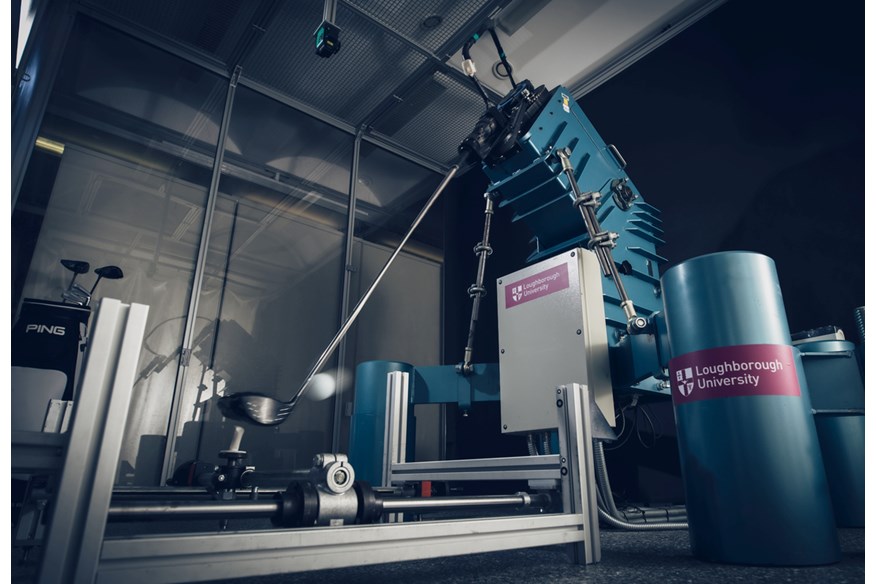
Leading our golf ball robot testing is our Equipment Editor, Simon Daddow, who spent a large part of his career as a golf club maker and product development manager, and has worked in the golf industry for more than 30 years.
We decide to perform golf ball robot tests because it’s the only true way to see the difference between each golf ball’s performance with a repeatable swing and consistently accurate impact location – which no human tester can reproduce.
Certainly not across different swing speeds and various club categories, especially when 20+ different golf ball models need testing.
Our robot testing takes longer than a week to complete, we spend months behind the scenes planning how to make it happen, and Simon spends a week crunching the numbers to determine our top-performing golf balls from each robot test.
With the costs of buying an R&D golf robot out of our reach, there aren’t too many options around. The brands that have them also make golf balls, which obviously presents a conflict of interest should we use one to perform a golf ball test against competitor models.
Loughborough University, though, is often referred to as the best sports science university in the world, and thanks to Ping’s introduction (who have invested in an R&D lab on campus) a couple of years ago it made perfect sense to explore the opportunity to collaborate in 2023 and again in 2024.
It takes months of setting up, but with Senior Lecturer Jonathan Roberts being a golfer and understanding our cause, and with Loughborough and Ping having no vested interest in golf balls, our partnership makes perfect sense.
We have always been about the club golfer here at TG, so it’s vital to us to test each golf ball at different swing speeds to show how each model will perform for you. So, no matter what your speed, you’ll find plenty of useful information within this test tailored to your own game.
Our driver shots were hit at speeds of 85, 100, and 115 mph (moderate, mid, and fast). For 7-iron we used a mid-80 mph speed. The pitching wedge was hit at 74 mph. To ensure our results reflect real-world golfers we also used the Ping clubs most suited to these speeds.
A 9° Ping G430 LST driver (with X flex Tour 2.0 Chrome shaft) at 115 mph. A 10.5° Ping G430 Max driver (with S flex Tour 2.0 Chrome shaft) at 100 mph. And a 12° Ping G430 Max (with R flex Alta CB Black) at 85 mph. We took the same approach for irons and wedges using the Ping Blueprint S 7-iron and pitching wedge (with S flex Dynamic Gold 120 shafts).
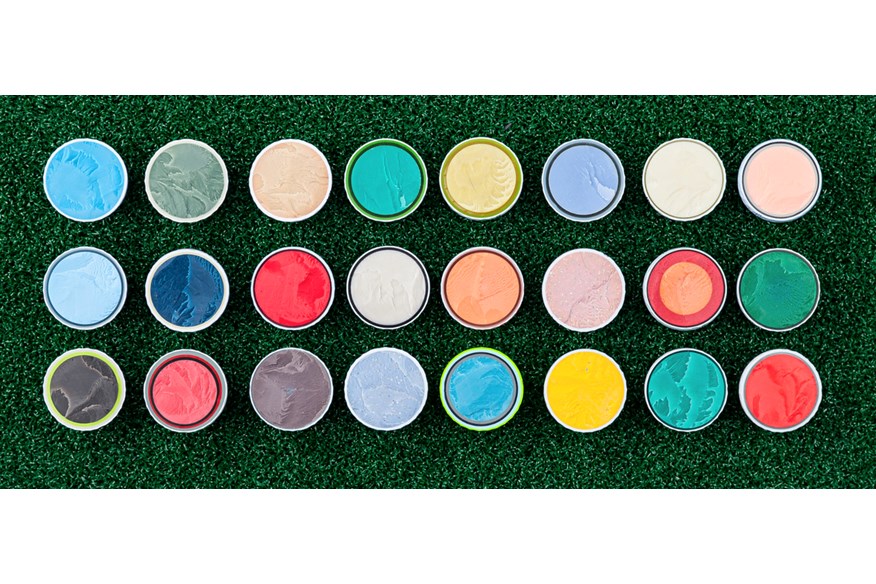
James Hogg, one of our Equipment Writers, is responsible for much of the on-course testing of golf balls where he applies his skills and knowledge from working in the golf industry since 16-years-old.
Thankfully, at Today’s Golfer, we are blessed to have a full team capable of testing all pieces of golf equipment – including golf balls. No matter whether a ball features or not in one of our robot tests, we ensure it’s put through its paces out on the golf course by one of our talented team members.
When we’re testing golf balls, both out on the course and on the robot, we’re always looking for certain aspects. With all golf balls, one of the most obvious aspects you’re able to judge with the naked eye is durability. For me, this is one of the most important aspects because if a ball isn’t durable then its value plummets through the floor – as does its performance.
Every other feature of a golf ball we’re scrutinising when testing golf balls is more ambiguous because they are more dependent on the wants and needs of the individual. For instance, feel is something that’s always discussed with golf balls, therefore, we make it one of our priorities to provide as much information as we can about feel, even if it contradicts what the brand says we’ll always stand by what we feel.
Flight and ball trajectory is much easier to draw conclusions from our robot test than any on-course testing because on course it can depend on what club we’re using, weather conditions, and how the ball sits either in the fairway or rough. Hence why it works much better getting this information from a robot because it delivers the same swing and strike with the same club. However, we will still mention how the ball travelled for us on the course compared to what we normally play or want to see.
Obviously, important factors to investigate are distance and spin, after all, these are ultimately what most golfers are interested in depending on whether they need to improve how far they’re hitting the ball or if they want to hit and hold more greens.
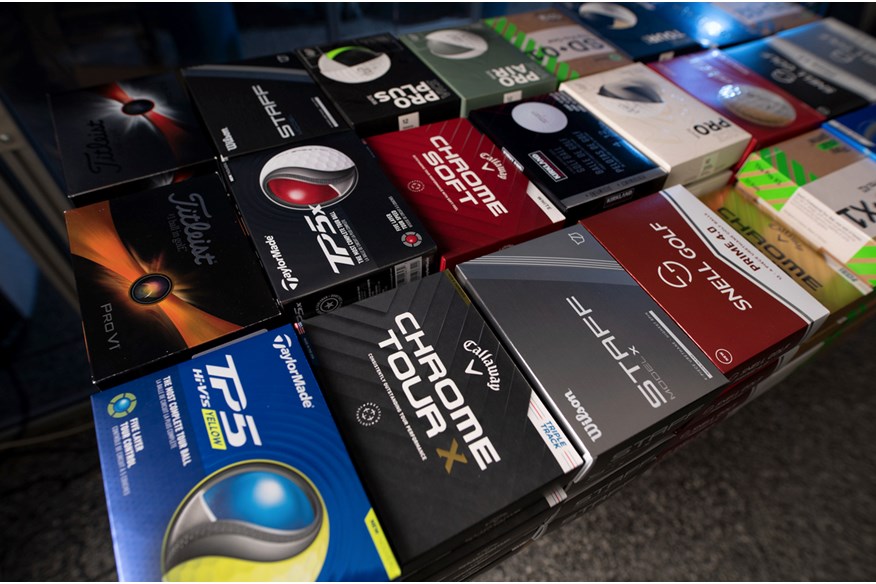
There are certain golf balls designed to do both for certain golfers, mainly the best premium golf balls that are built with Tour Pros in mind. However, if we’re testing a distance golf ball, we expect it to produce impressive and competitive distance, but we don’t expect it to grab really well on the greens so we account for this when we’re testing.
Most golfers will be interested in a golf ball that spins in the short game to give them all the control they need around the greens. When we’re out testing on course this is one of the most important aspects we’re looking at. I personally spend a large amount of time at the short game area playing chip shots and pitch shots to see how well each ball grabs.
For a golf ball to feature among the best golf balls for slow swing speeds, they need to deliver performance for the needs of the intended golfer. Obviously, they have to perform well to be considered one of the best in their category too.
Best Golf Balls for Slow Swing Speeds: FAQs
Are softer golf balls better for slower swing speeds?
Soft golf balls tend to be the preference for most golfers but that doesn’t mean they’re any better (or worse) than firm golf balls for golfers with slow swing speeds. Softer golf balls often work better for golfers who struggle to find the centre of the club face consistently because they often have a lower compression.
However, just because you have a slow swing speed doesn’t mean that you struggle to hit the centre of the club face. That’s for you to judge and be as honest with yourself as possible. All of the X-model golf balls in this list have lower-compression alternatives, so if you want to play with a premium golf ball and you’re looking for a bit more forgiveness then opt for the non-X-model.
What is considered a slow swing speed in golf?
Swing speed is obviously dependent on a vast number of factors. As a point of reference, the average driver swing speed on the PGA Tour is around 115mph and the mean driver swing speed on the LPGA Tour is roughly 96mph. If you’re anywhere near those swing speeds then you haven’t got a slow swing speed.
In our 2023 and 2024 golf ball robot tests the slowest driver swing speed we tested at was 85mph. Depending on who you are this might not be a slow swing speed, but for most golfers, this (and anything slower) would be considered a slow swing speed.
Can I use A Titleist Pro V1 with a slow swing speed?
Yes, the Titleist Pro V1 is the No.1 ball in golf and it’s a perfectly suitable option for golfers with slow swing speeds. Obviously, depending on your ability, you might elect to play with another one of the best golf balls for slow swing speeds.
How can I increase my distance with a slow swing speed?
By playing with one of the best golf balls for slow swing speeds – of course! All of the golf balls I’ve provided you with in this article have been tested on a robot and are proven to deliver competitive distance for golfers with a slow driver swing speed.
Another way is to ensure you have appropriate shafts for your swing speed. If you have a slow swing speed then you’ll likely benefit from playing with a light shaft. For more information on shafts check out our page on the best iron shafts.
